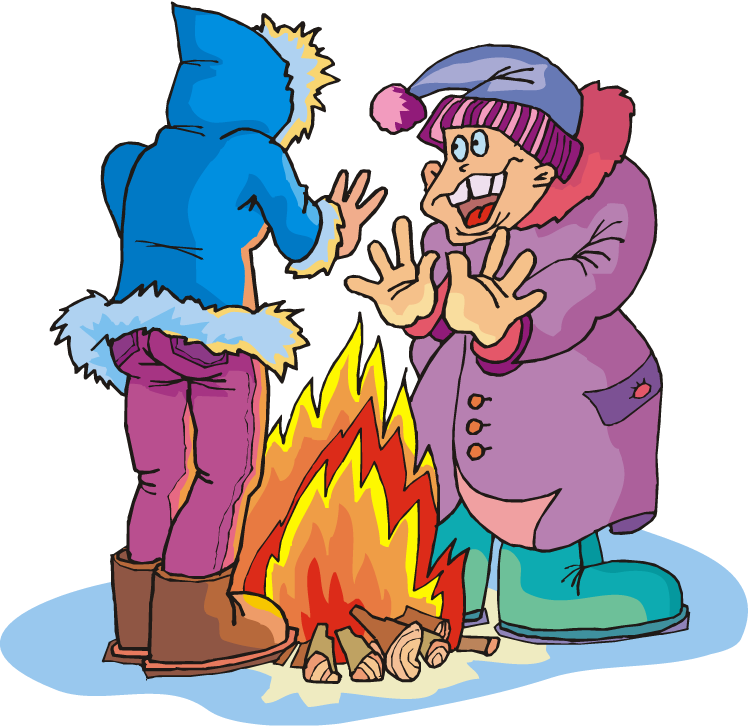Thermal Station 3.1 - Communications Module
How the Body Regulates Its Temperature
PRESENTATION AND PRACTICE

![]() Activity graded by the % of correctness of your work
Activity graded by the % of correctness of your work
![]() Activity graded by the rubric
Activity graded by the rubric
![]() Activities from which you can choose five to submit
Activities from which you can choose five to submit
Reflect On What You Know
- You learned that the hypothalamus is referred to as the body’s thermostat. What else uses a thermostat? What does a thermostat do?
- What happens to our bodies when homeostasis is not maintained?
Word Parts
If this is your first If you have not completed this section in other stations, CLICK HERE to complete it.

![]() Here are some new terms from this module:
Here are some new terms from this module:
| Thermoregulation Ambient temperature Retaining Set point Perspiration Vasoconstriction Thermogenesis Hormonal thermogenesis |
Homeostasis Hypothalamus Dissipating Negative feedback Vasodilation Mild hyperthermia Hypothermia |
If you’re not sure of the meaning of some of the words, you can find flashcards with the definitions of these words by clicking on the link below.
https://quizlet.com/84384183/flashcards
Write fifteen sentences using the words. Write five simple, five compound and five complex sentences. If you don’t remember how to make each kind of sentence (or want a review), click on the link below before writing. On the right side of the page, you can click to watch a video or a slide presentation that reviews all three types of sentences.
http://www.time4writing.com/sentence-writing/simple-complex-compound-sentences/
When you have written your sentences, read them over and correct if necessary. Hand them into your coach. At least twelve of the sentences must be written correctly to receive credit for this assignment.
![]() Click on the link below to read an article about sweat. You will need to register. Username: anne.ventrello@mcsd.org Password: Educati0n
Click on the link below to read an article about sweat. You will need to register. Username: anne.ventrello@mcsd.org Password: Educati0n
You may print the article and questions if you’d like. Read the article and answer the questions. When you are finished, give the answer sheets to your coach to check.
http://www.readworks.org/passages/whats-doc
![]()
 What if your cat had a fever? How would you know? Read the following article and find out. After you are done, write a list of things you learned or draw pictures with captions to show what you’ve learned.
What if your cat had a fever? How would you know? Read the following article and find out. After you are done, write a list of things you learned or draw pictures with captions to show what you’ve learned.
http://pets.webmd.com/cats/fevers-in-cats
![]() In this module we learned that our bodies regulate our body temperature and that we get goose bumps when we are cold. But sometimes, we get goose bumps when we hear a story or listen to beautiful music. Why do you think that happens?
In this module we learned that our bodies regulate our body temperature and that we get goose bumps when we are cold. But sometimes, we get goose bumps when we hear a story or listen to beautiful music. Why do you think that happens?
Write your hypothesis (In science, a hypothesis is an idea or explanation that you then test through study and experimentation. Outside science, a theory or guess can also be called a hypothesis. A hypothesis is something more than a wild guess but less than a well-established theory.) before you click on the link below.
Then, click on the link below to see why we get goose bumps when we listen to a beautiful song and find out if your hypothesis was right.
http://wonderopolis.org/wonder/why-do-you-get-goose-bumps-when-someone-sings-beautifully
Was your hypothesis correct? Now, write a short story about the last time you got goose bumps when you were not cold, OR you can write a summary of the article you just read. Turn your story into your coach.
![]() In the medical field you may be asked to write about different cases (case studies). These studies are similar to writing an essay. Here’s an opportunity to practice.
In the medical field you may be asked to write about different cases (case studies). These studies are similar to writing an essay. Here’s an opportunity to practice.
Write a short essay (3 to 5 paragraphs) explaining whether you are a dog lover or a cat lover and why. Or do you like both? Why is one better than the other or why do you, or don’t you, like animals? You may use your own experiences or information you find on the Internet or in an article. Turn in your essay to your coach.
![]() Have you ever been told to go jump in a lake? How about jumping in a cold lake at that? Click on the link below to read an interesting article about cold conditioning.
Have you ever been told to go jump in a lake? How about jumping in a cold lake at that? Click on the link below to read an interesting article about cold conditioning.
http://rebootedbody.com/cold-conditioning/
What do you think? Are you ready to take the challenge? Why or why not? Write at least two paragraphs telling why you believe cold conditioning would be healthy or why you disagree with the author.
![]() There may be times when you will be asked to do something on the job that you may not agree with or may not want to do. How will you react in those situations? Do you think you must always do what your supervisor says?
There may be times when you will be asked to do something on the job that you may not agree with or may not want to do. How will you react in those situations? Do you think you must always do what your supervisor says?
Think of at least one example where you might disagree with your boss and how you would handle it. Write at least five sentences about it.
![]() Game on heat and recording scientific data. Click on the link below. Read the short summary. Then go to the activity below the summary. Once you have started the activity, there will be a link to Table. Create your own table (on a piece of paper) to keep track of the data you collect. When you have finished collecting the data, share the table along with at least two sentences about what you observed with your coach.
Game on heat and recording scientific data. Click on the link below. Read the short summary. Then go to the activity below the summary. Once you have started the activity, there will be a link to Table. Create your own table (on a piece of paper) to keep track of the data you collect. When you have finished collecting the data, share the table along with at least two sentences about what you observed with your coach.
http://www.sciencekids.co.nz/gamesactivities/keepingwarm.html
![]() "Just the facts, ma'am." You may be too young to remember that phrase from a detective show on TV years ago, but sometimes in writing we just need to deliver the facts. This type of writing is called expository. It explains things to the reader. Expository writing has only facts – NOT opinions.
"Just the facts, ma'am." You may be too young to remember that phrase from a detective show on TV years ago, but sometimes in writing we just need to deliver the facts. This type of writing is called expository. It explains things to the reader. Expository writing has only facts – NOT opinions.
Think of a topic that you know a lot about like cars, kids, food, muscles and levers, temperature regulation or gardening. Write at least five expository sentences about that topic. Remember, introduce the topic first and then write sentences telling more about it. NO opinions!
CLICK HERE to open the rubric for this assignment. Reread your expository article before submitting your work to your coach.
You have completed a variety of reading and writing activities. If you have gotten 80% or more on all your assignments, you are ready to go to the math module. Congratulations!

__________________________________________
Links to Station 3.1 Modules
Lab Intro | Lab Presentation and Practice | Communications Intro| Communications Presentation and Practice| Math